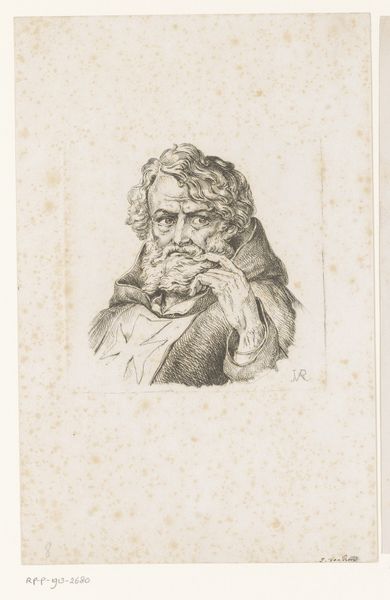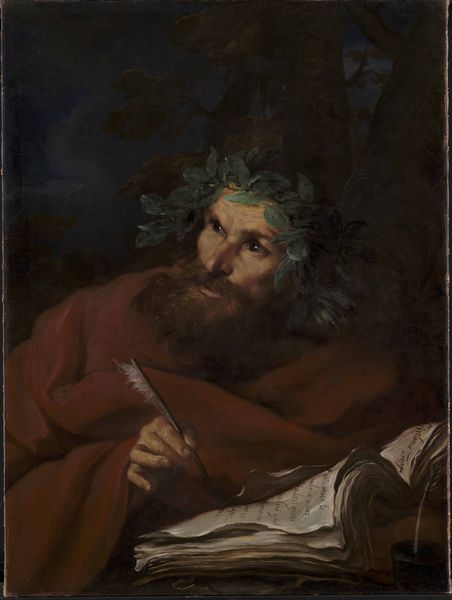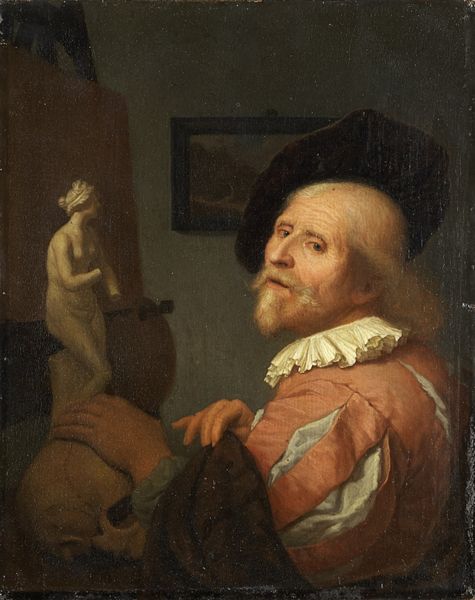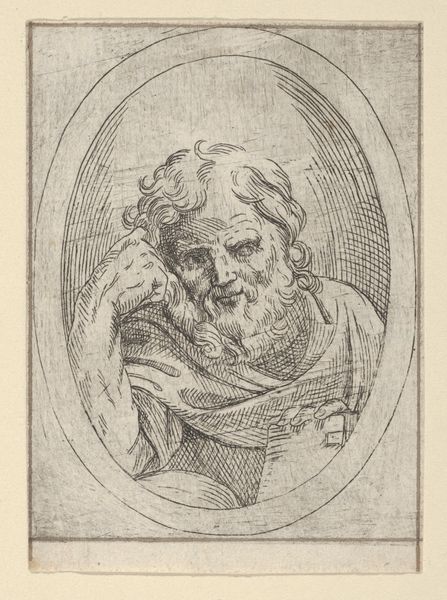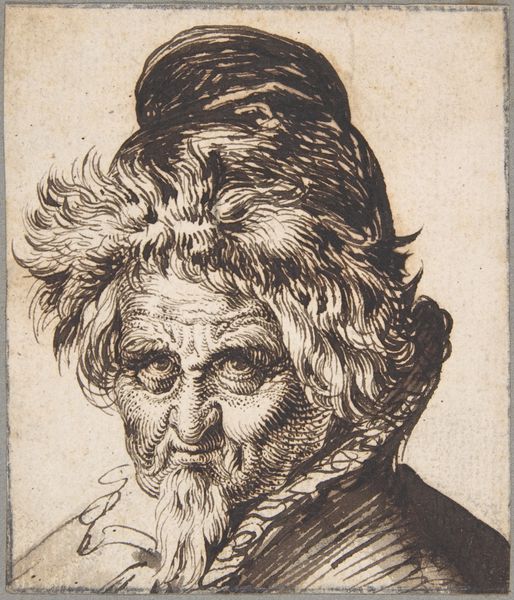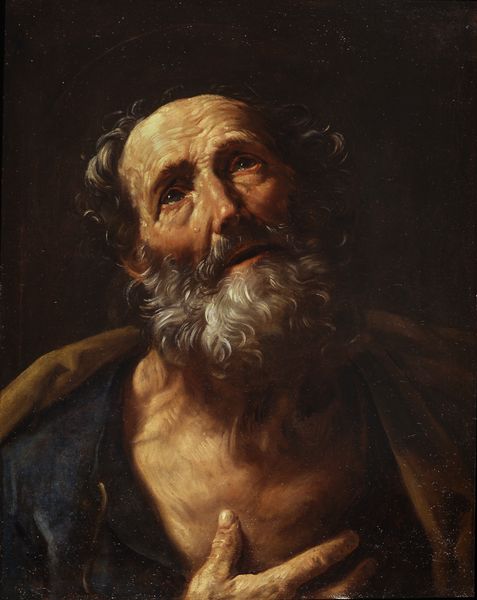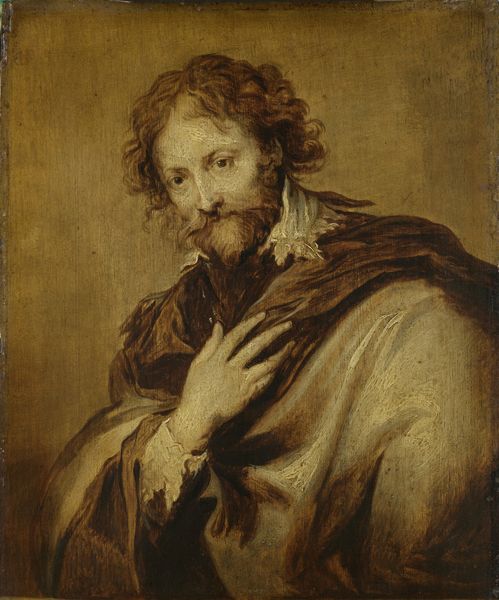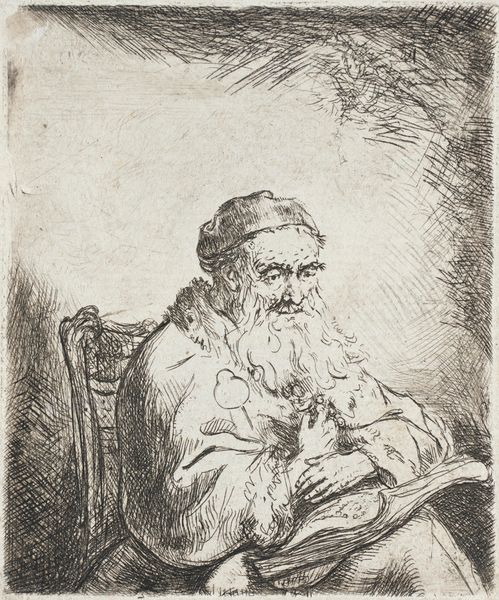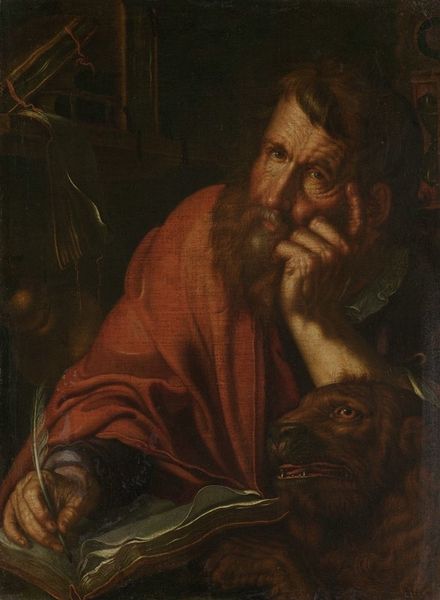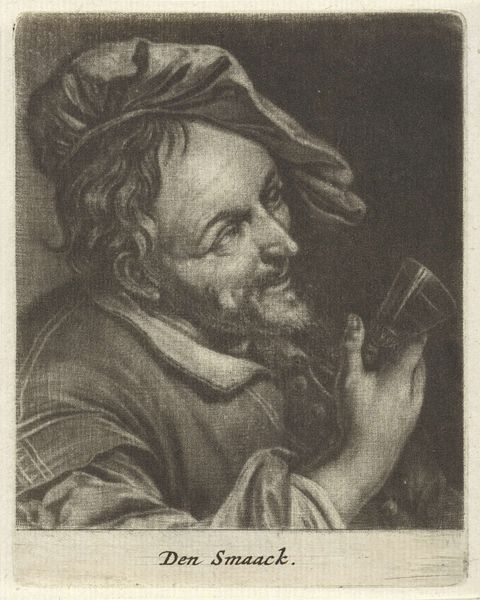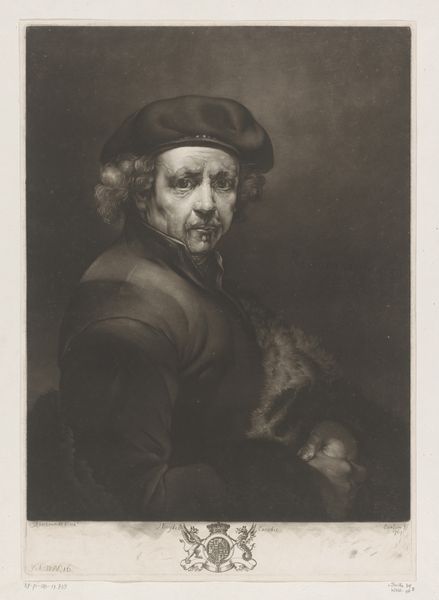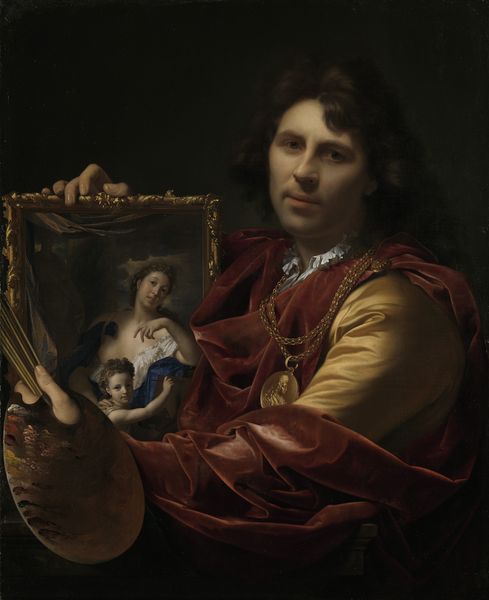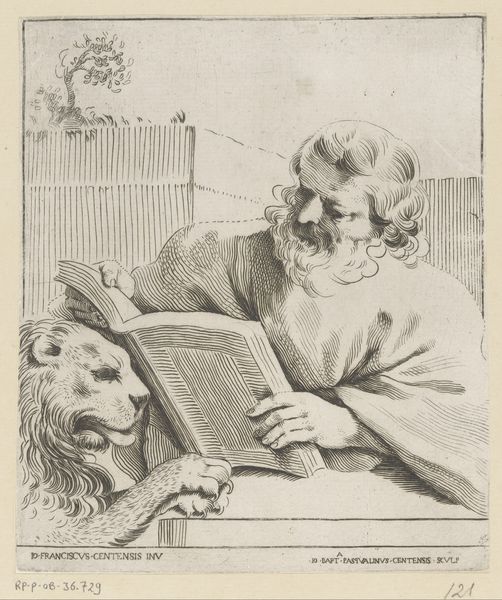
painting, oil-paint
#
portrait
#
baroque
#
portrait
#
painting
#
oil-paint
#
dog
Dimensions: 25 9/16 × 17 11/16 in. (65 × 45 cm)
Copyright: Public Domain
Editor: So, here we have Giacomo Ceruti's "An Old Man with a Dog," dating from the 1740s. I find this work so affecting – there's something profoundly melancholic in the man’s gaze. How do you interpret the symbolism at play here? Curator: It's fascinating how Ceruti utilizes the image of the dog. Throughout art history, the dog often symbolizes fidelity and loyalty, but here, something feels different. Notice the man's grip. Is it protective? Possessive? Is it perhaps a reflection of the changing societal attitudes towards the elderly and their relationship to companionship during this period? What feelings does it evoke for you? Editor: Protective, certainly, but maybe also… resigned? The dog's eyes reflect a similar quiet acceptance. I wonder if this work served to give dignity to marginalized groups? Curator: Precisely! Look closer – consider the old man’s clothing, worn yet dignified. The Baroque period celebrated grandeur, but Ceruti presents us with something far more grounded. The artist uses simple symbolism that asks the viewer to consider the dignity inherent in every being, challenging perhaps, the traditional social hierarchy with these simple icons. Editor: That’s fascinating. I hadn’t considered how subversive the choice of subject itself could be. So the emotional weight we see is connected to this conscious decision to challenge conventions. Curator: Absolutely. And remember the dog isn't just any dog, but perhaps the last true companion, standing for unconditional love, something easily overlooked in a society obsessed with status. How compelling it all becomes! Editor: It really changes my whole perception of the artwork. I thought it was merely a melancholic portrait but now I see layers of social commentary within it. Thank you. Curator: My pleasure! Exploring art as cultural memory reveals profound connections between past and present.
Comments
No comments
Be the first to comment and join the conversation on the ultimate creative platform.
